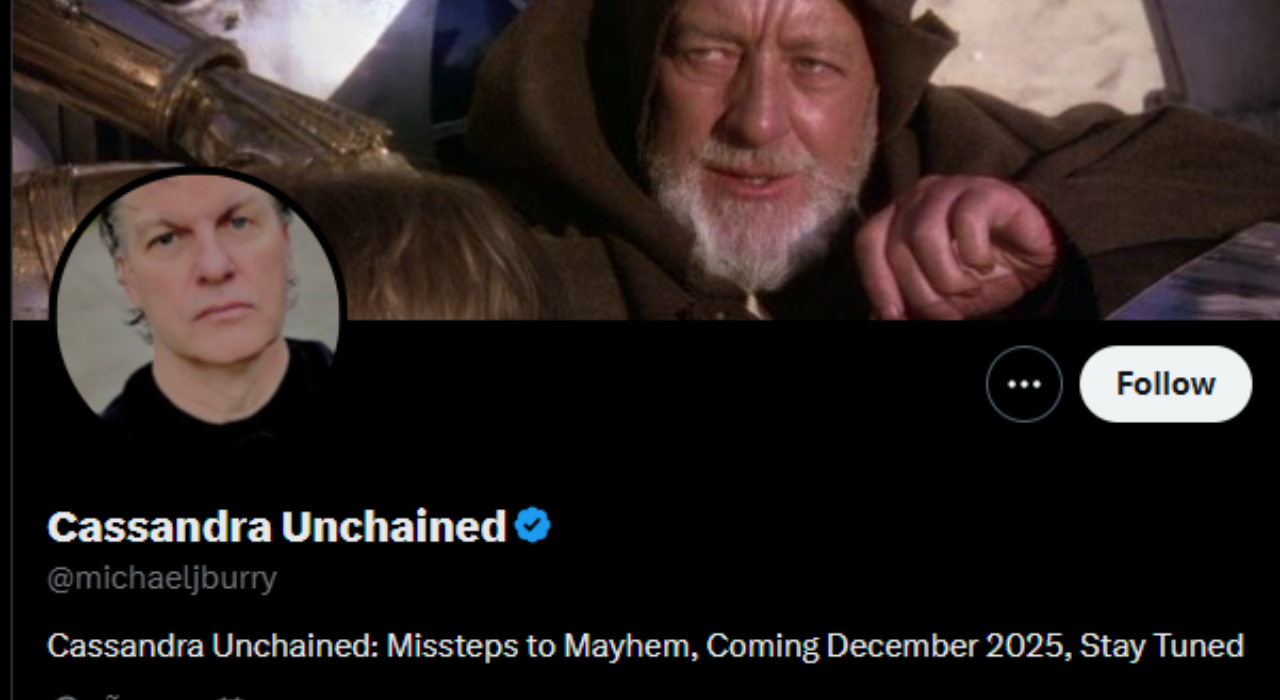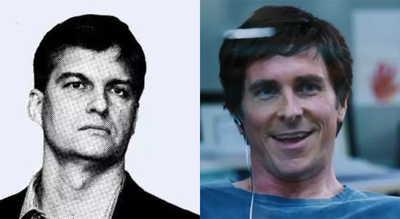Michael Burry, the investor made famous by predicting the 2008 financial crisis, is back, this time betting against two of the most prominent companies in the growing artificial intelligence (AI) sector: Nvidia and Palantir. Known for spotting market bubbles before they burst, Burry believes the current AI boom could be the next bubble to pop. His controversial stance has reignited discussions about whether AI valuations have gotten out of hand. The hedge fund manager, portrayed by Christian Bale in the 2015 movie The Big Short, has placed nearly $1.1 billion in bearish bets on these two companies, sparking concerns that the AI market might be heading for a dramatic fall.
Michael Burry’s return after two years
Michael Burry’s return to social media has been anything but conventional. After a two-year break, the hedge fund manager behind Scion Asset Management resumed posting on X (formerly Twitter) on October 31, 2025, just two days before his fund’s quarterly filings revealed a massive bet against two of the hottest AI stocks: Nvidia and Palantir. His posts have ranged from ominous warnings and cryptic quotes to “Star Wars” memes references, all all centred around his belief that the AI market is in the midst of a dangerous bubble. Burry’s first warning came in the form of a statement he shared alongside an image of Christian Bale portraying him in The Big Short, the 2015 film that dramatized his prediction of the 2008 housing crash. The caption read: “Sometimes, we see bubbles. Sometimes, there is something to do about it. Sometimes, the only winning move is not to play.” The last line is a direct reference to the 1983 movie WarGames, where a supercomputer runs countless simulations of nuclear war, only to find that all outcomes lead to mutual destruction. In the context of today’s stock market, Burry’s use of this quote suggests that the risks of investing in certain sectors, particularly AI, might be so great that it’s better to simply sit out.This post, made on October 31, 2023, marked Burry’s first return to X (formerly Twitter) after a two-year break.
The Empire Strikes Back: Burry’s cryptic but ominous warnings on the AI bubble
As part of his prophetic return, Burry also updated his profile picture with a still portrait of him and changed his bio on X to read:“Cassandra Unchained: Missteps to Mayhem, Coming December 2025. Stay tuned.” The reference to Cassandra, the cursed Trojan priestess who always spoke the truth but was never believed, highlights Burry’s long-standing reputation as an outsider. His predictions often seem so far-fetched and ahead of their time that they are met with skepticism, much like Cassandra’s warnings, which no one believed until it was too late.

Michael Burry X Profile/ Screengrab
Continuing his rebellious stance, Burry also swapped his banner image on X to a still from Star Wars: A New Hope, featuring Obi-Wan Kenobi using his Jedi mind trick to deceive Imperial stormtroopers. This visual was a clear positioning of Burry as a lone figure fighting against the mainstream narrative, in this case, against the widespread optimism around AI.Burry revisited his Star Wars reference in a single follow-up post, where he shared two images. The first was a highlighted excerpt from Capital Account, a book that discusses the dot-com bubble. The passage he shared detailed how the telecoms boom and bust resulted in vast swaths of unused infrastructure, plunging prices, and the downfall of many high-valued companies that ultimately scrambled for creditor protection. This reference was an attempt by Burry to draw a parallel between the telecom collapse of the late 1990s and the current state of AI, suggesting that today’s AI infrastructure could suffer the same fate. The second image in the post was a still from Star Wars: A New Hope, featuring a stormtrooper. Burry captioned the slide with the words, “Move along,”As part of his critique of the current AI boom, Burry attached three slides to a post on X on November 4, a day after his filings were revealed. accompanied by the caption: “These aren’t the charts you are looking for. You can go about your business.” The images were intended to explain why Burry is bearish on the AI frenzy, drawing on visual data to support his concerns.The first slide was a chart showing a sharp slowdown in cloud computing growth among major companies like Amazon, Alphabet, and Microsoft. This chart illustrated how the growth rate of cloud services, a key driver of the tech sector, has steadily slowed in the last two years. The second slide highlighted a significant spike in capital expenditures (CapEx) across the US tech sector, particularly in the AI and cloud computing fields. This surge in spending, Burry noted, mirrored the unsustainable growth seen just before the dot-com crash of the late 1990s and the 2008 financial crisis. Companies investing aggressively in infrastructure without a clear path to profitability or return raised alarm bells for Burry, who has seen this kind of behavior lead to disastrous market corrections in the past.The third and final slide depicted the interconnected, circular dealmaking between AI companies like Nvidia, OpenAI, Oracle, and Microsoft. Burry pointed out how these companies are increasingly intertwined in a web of interdependent partnerships and investments, a form of dealmaking that can create a self-reinforcing bubble. He warned that such arrangements could drive inflated valuations that eventually collapse when the bubble bursts.
Betting against Nvidia and Palantir: A $1 billion gamble
True to form, Burry backed up his warnings with action. In a regulatory filing revealed on Monday, November 3, the hedge fund manager’s firm, Scion Asset Management, disclosed two striking bearish bets placed during the previous quarter. Scion purchased put options on 1 million Nvidia shares and 5 million Palantir shares, with notional values of $187 million and $912 million, respectively. The combined value of these positions is approximately $1.1 billion. To break this down for readers unfamiliar with the term: a put option is a financial contract that allows the buyer to sell shares at a predetermined price before a certain date. If the price of the stock falls, the put option becomes more valuable. Burry is essentially betting that the stock prices of Nvidia and Palantir will decline, and if they do, his options will pay off. This is a significant move, as Scion’s total US stock portfolio shrank from 15 positions at the end of June to just 8 positions by the end of September. Of these eight, the bets on Nvidia and Palantir account for the bulk of the portfolio, making up nearly $1 billion of Scion’s holdings. Burry’s move is a clear signal that he believes these companies’ massive valuations are unsustainable. In addition to these two major positions, Scion’s portfolio also includes stocks like Bristol-Myers Squibb, GeoGroup, and CVS Health. However, the bulk of the attention has been on Nvidia and Palantir due to their significant weight in his portfolio, and their role as symbols of the AI-driven market frenzy that Burry has warned against. The firm managed about $155 million as of March, per its latest regulatory filing.
Reactions to Burry’s actions
As expected, Burry’s bearish stance has caused a stir. Palantir CEO Alex Karp has since blasted the move, calling the decision to bet against AI “batst crazy.” “The two companies he’s shorting are the ones making all the money, which is super weird,” Karp told CNBC. “The idea that chips and ontology is what you want to short is bats**t crazy. He’s actually putting a short on AI … It was us and Nvidia.”Meanwhile, analysts like James Kardatzke, co-founder of stock research platform Quiver Quantitative, pointed out that Burry’s track record of making large bearish bets when he perceives a market bubble is well-known. “Michael Burry has a history of making large bearish bets when he perceives there to be a bubble,” Kardatzke said. “This new disclosure suggests that he now believes there is an AI bubble which is due to pop.”This kind of contrarian thinking is what made Burry famous in the first place. In 2008, he was one of the first to realise that the housing market was heading for disaster. He bet against the subprime mortgage market, making billions of dollars when the housing crisis finally hit. That story was immortalised in the book and movie The Big Short, with Christian Bale portraying Burry.
The bigger picture: A potential AI market correction?
Burry’s positions have sparked significant attention, not only because of the companies he’s betting against but also because they raise crucial questions about the future of artificial intelligence. The AI sector is undeniably booming, with valuations of $5 trillion for Nvidia, nearly $500 billion for Palantir, and a similar price tag for OpenAI. But Burry warns that these inflated valuations may be overestimating future growth, suggesting the market is pricing in an almost utopian level of success for these firms. If these companies fail to meet the sky-high expectations, their stock prices could suffer sharp declines, triggering a wider market correction.There are echoes of the dot-com bubble in Burry’s critique. Much like the late 1990s, when tech companies poured billions into building infrastructure that ultimately sat idle after the bubble burst, today’s AI giants are investing massive amounts of capital into creating vast, intricate systems—cloud networks, data centers, and AI tools, on the assumption that demand will continue to grow exponentially. But if that demand falls short or fails to materialize as projected, we could see a repeat of history: a market correction that drags down the sector and wider markets in its wake. Burry’s warnings echo his past actions. Back during the subprime mortgage crisis, he delivered a step-by-step breakdown of how the bubble inflated, how he predicted and placed bets on its collapse, and how the fallout revealed glaring vulnerabilities in the US financial system.In one of his more philosophical statements, Burry reflected: “We must remember that entire societies can and often do follow the wrong path for a very long time, and that there is nothing wrong with breaking from the social norm to ensure good outcomes.” He added, “Sober analysis on the part of the individual is paramount.” Go to Source



